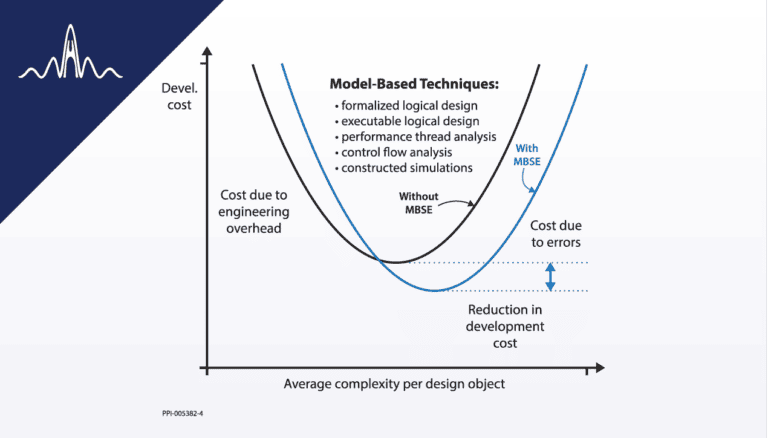I am sometimes asked about the benefits of model-based systems engineering (MBSE) design methods.
The model-based design (MBD) aspect of MBSE is a way of helping get design right the first time, reducing development costs and timescales, where the design is not simple for the designers. MBSE, applied in the right circumstances, allows designers to work successfully at greater degrees of complexity, as illustrated in the accompanying diagram. Risk due to technology is also reduced, because of a greater focus on formalizing how the technology works. The diagram lists five techniques within MBSE that are means of achieving these improved results.
Other benefits of MBSE on the design side include:
- higher system reliability, due to better integration of reliability considerations into design on a real-time basis (DFMEA)
- opportunity to better integrate design of the product with design of its maintenance system, for improved maintainability and reduced maintenance costs
- improved understandability of the design by others, reducing life cycle costs by reducing costs or increasing the benefits of:
– redesign to changed requirements (for non-simple design)
– redesign to respond to obsolescence (for non-simple design)
– redesign to correct latent design defects (for non-simple design)
– design reuse.
An important aspect in implementing MBSE is to use a modelling language that exposes to the designer fundamental relationships in design, physical and logical, and makes it easy for the designer to establish these relationships. Not all MBSE languages achieve this, especially those languages developed by committee!













